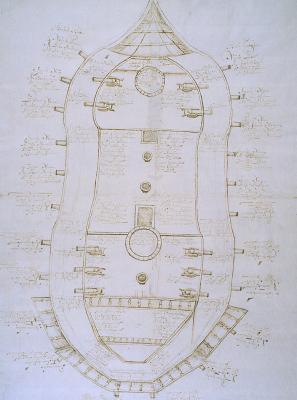This page is number 4 of seven pages on MexConnect which come originally from the website of CEDEX (Center for Historic Studies of Public Works and Town Planning) in Madrid, Spain. (Links to the other six pages are provided at the end of the article). The pages reflect an exhibition organized by CEDEX in 1988, entitled “Manila 1571–1898, The West in East”.
The fortifications that were erected by the Spanish Crown in its overseas territories is the largest collection of defence constructions ever to be built by one organizing authority.
Roberto Segre.Faced with the threat of other foreign powers, pirates, privateers and buccaneers, the Spanish Crown decided upon a dual defense system. One of these was mobile and comprised “the Fleet”: this provided dynamic defense, with fixed periods of vigilance and a single patrol circuit. The other was fixed and comprised static defense by means of fortification of the principle ports, which in turn became fortified cities.
Besides fortifications, these ports had a series of characteristics in common: the bays which protected them, the hydraulic engineering which was developed within them, and the existence of specific support infrastructure such as shipyards and warehouses.
Renaissance techniques and designs were assimilated by the engineers working under the Spanish Crown, adapting these to each individual case. Fortifications were brought in line with the requirements of each different region, and practical experience took precedence over any theoretical approach. The number, dimensions and extension of the fortifications built in the New World eventually created a type of defense known as the Spanish buttressed fortification.

112-cannon Spanish vessel. 18th century. MN During the reign of Philip V, the ungainly rounded shape of the galleons of the previous century began to be replaced by other, more streamlined vessels.

Plan of a galleon prepared for combat. 17th century. MN From the 16th century onwards, the American run galleons were organized into two fleets which set sail in May and in September, one bound for New Spain and the other for Terra Firma. This was the defense response in the face of the continual threats to Spanish overseas trading operations.

Veracruz (Mexico), with the castle of San Juan de Ulua. 1763. AGI The principal port on the coasts of New Spain was Veracruz, an enclave for the arrival and departure of the Indies run galleons. The city was situated in a strategic place opposite the small island of Ulua where the castle of San Juan was built.

Puerto Rico and its environs. 1783. SHM San Juan de Puerto Rico was built on a tiny island situated at the entrance to a large bay. At the end of the 18th century the harbour mouth was defended by the renowned Castillo del Morro.
Santo Domingo in 1778. Antonio Alvarez Barba. MN This first American founding had a short-lived success, although experiments with the urban planning and defence system were carried out and these were later applied to all other cities founded on that continent.

Habana in 1746, according to the plan drawn up by Antonio de Arredondo. SGE Founded in 1515 and sited on a protected bay, it soon became a place where the New Spain and Terra Firma fleets gathered. From the times of Philip II and as a result of attacks by pirates, it underwent fortification works and in the 18th century was one of the most protected ports in the whole of America.

Aerial view of Veracruz (Mexico). C. Castro and Francisco Garc’a. 19th century. BN Veracruz was founded in 1519 by Hernán Cortés, on the Gulf of Mexico, in accordance with an urban layout model based on a grid system of streets and blocks which radiated from a central “plaza”.

Cartagena de Indias (Colombia). AGI Founded in 1533 at the foot of a large bay and on the site of an ancient native village, it soon became one of the most important places in America by virtue of its large protected bay and its excellent communication routes to the interior.

Panama in 1673. AGI The Spaniards established a system that was both a nexus and a barrier in the area of the isthmus when they built and fortified the cities of Portobelo and Panama. The expeditions to Peru and the rest of America sailed from this latter city.

Montevideo in 1783. MN Founded in later times, 1726, only at the end of the Viceroyalty, Montevideo played an important role associated with the defence of Spanish territory, which at that time was threatened by the growing power of Brazil.

Cartagena de Indias (Colombia), with its fortifications. 1594. AGI Because of the instability of the soil upon which it was built and because of the dreadful climatic conditions, defence of this city during the modern era was punctuated by repeated failure. During the 18th century, fortification works were unexpectedly boosted and turned Cartagena into an impregnable city.
We believe that the material on this page is in the public domain, but if you have reason to believe otherwise, please advise us so that we can provide the correct credit/s.
The other pages on our site are:
- 1 The Longest Transoceanic Route
- 2 Sailing On and On
- 3 Ships, Galleons, Frigates and Corvettes
- 5 The “Virreinato” of New Spain
- 6 The “Cuadrícula”
- 7 The Pacific Route to the Orient
